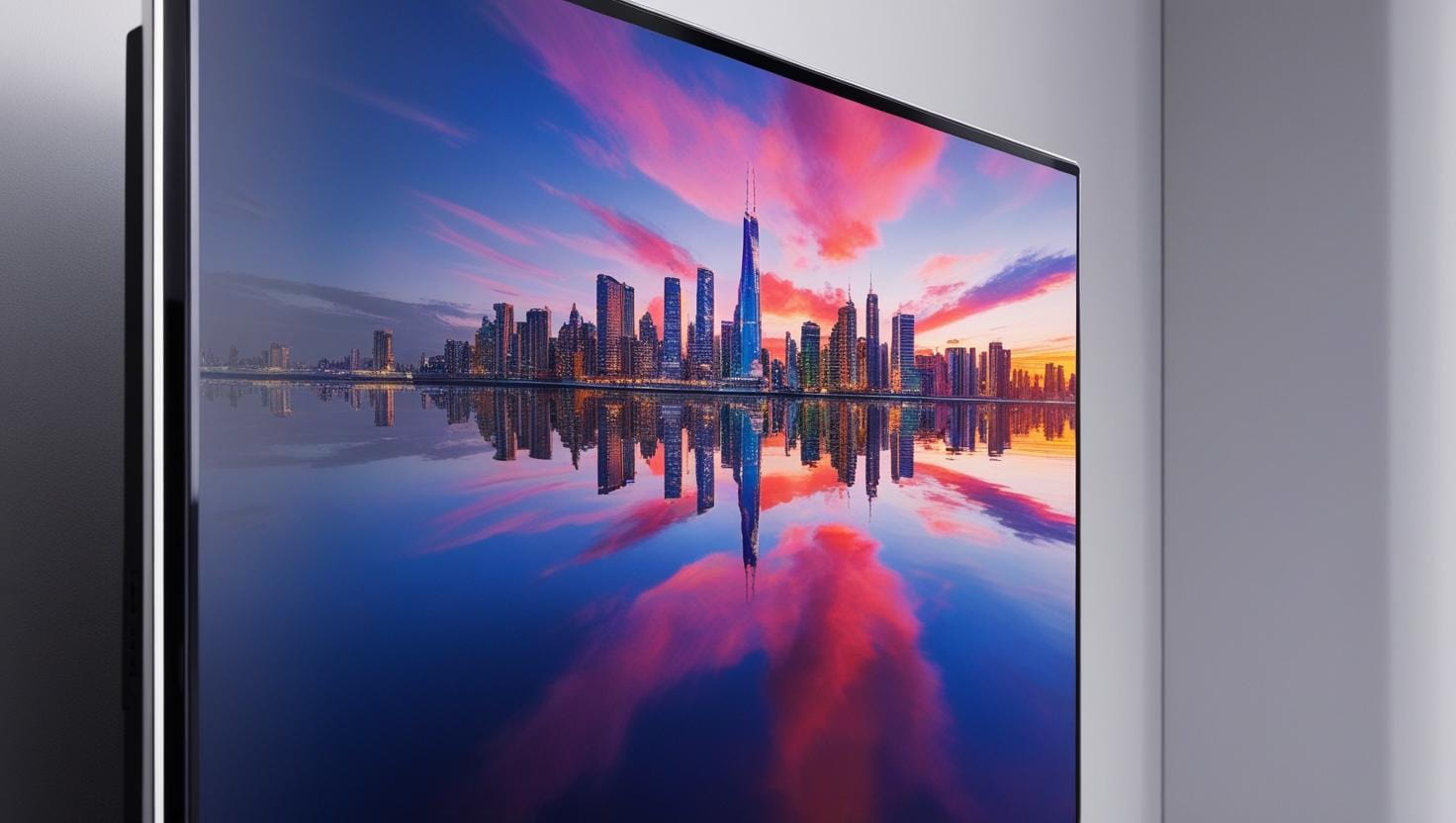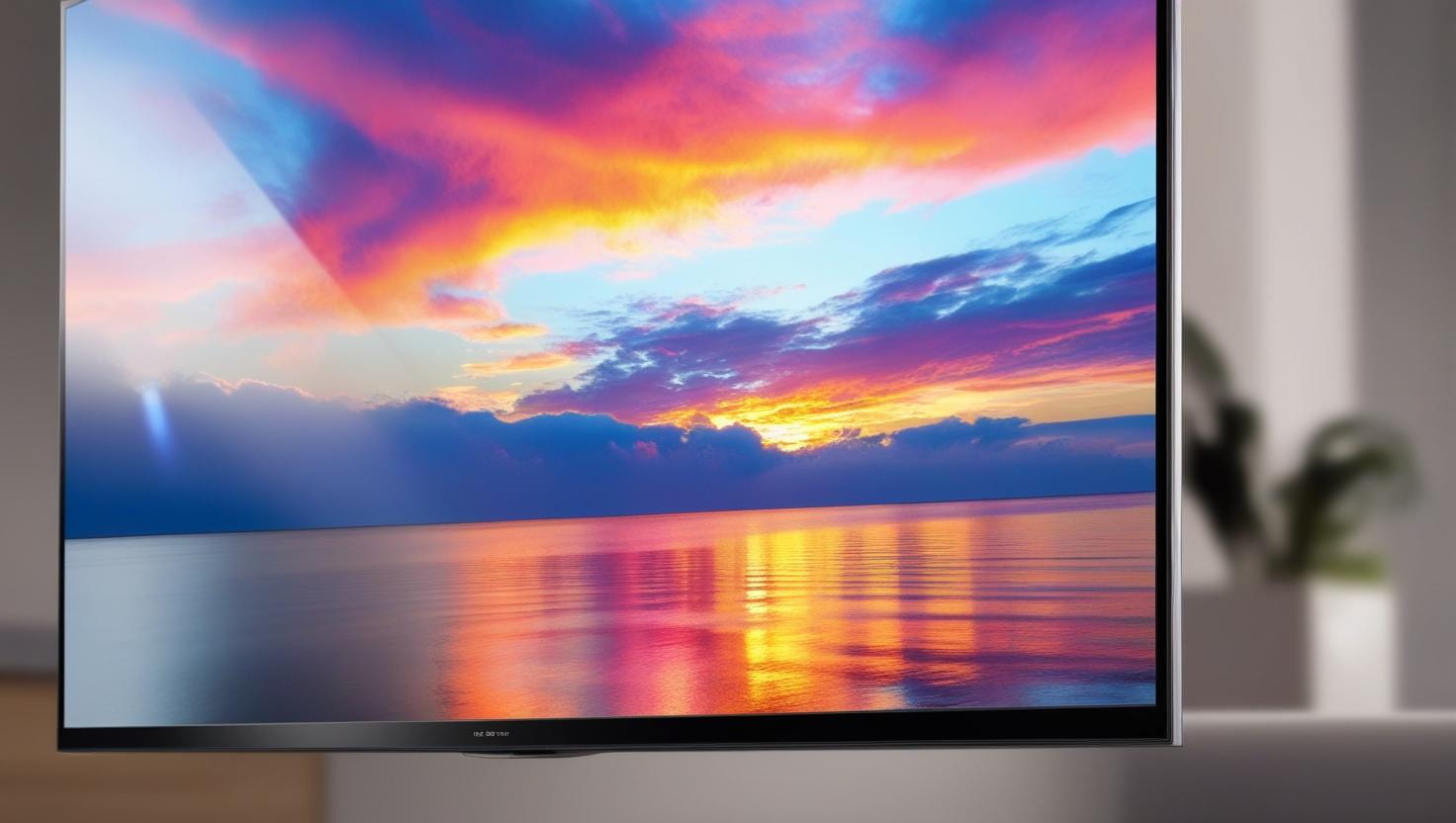Introduction
Your TV screen is the window to your favorite shows, movies, and games, but dust, fingerprints, and smudges can dim that crystal-clear view. Knowing how to clean a TV screen properly ensures your display stays pristine without risking damage to its delicate surface.
This ultimate guide walks you through the safest and most effective methods to clean your TV screen, whether it’s an LED, OLED, LCD, or plasma model. With step-by-step instructions, practical tips, and common mistakes to avoid, you’ll keep your TV sparkling clean and maintain its picture quality for years to come.
Why Cleaning Your TV Screen Matters?

A dirty TV screen doesn’t just look bad—it can affect your viewing experience. Dust and smudges can distort colors, reduce brightness, and make details harder to see. According to a 2023 survey by Statista, 68% of households in the U.S. own at least one smart TV, and with such widespread use, proper maintenance is key to preserving your investment. TVs, especially modern ones with advanced displays, have delicate coatings that can be damaged by improper cleaning methods. Learning how to clean a TV screen the right way protects your device and keeps it looking brand new.
Risks of Improper Cleaning
Using the wrong tools or solutions can harm your TV screen. Harsh chemicals, abrasive cloths, or excessive pressure can:
- Scratch the screen’s surface.
- Strip away anti-glare or anti-reflective coatings.
- Cause discoloration or cloudiness.
- Void your TV’s warranty in some cases.
This guide covers safe techniques to avoid these pitfalls and ensure your TV stays in top condition.
Tools You’ll Need to Clean Your TV Screen
Before diving into how to clean a TV screen, gather the right supplies. Using specialized tools designed for delicate electronics prevents damage and ensures a streak-free finish. Here’s what you’ll need:
- Microfiber cloth: Soft, lint-free cloths designed for electronics.
- Distilled water: Free of minerals that could leave residue.
- Isopropyl alcohol (70% or less): For tougher smudges, when diluted properly.
- Spray bottle: For applying cleaning solutions evenly.
- Compressed air (optional): To remove loose dust from edges.
- Soft brush (optional): For gently dislodging dust from crevices.
Avoid household items like paper towels, tissues, or dishcloths, as they can be too abrasive for sensitive TV screens.
Step-by-Step Guide: How to Clean a TV Screen Safely
Follow these steps to clean your TV screen effectively while keeping it safe from damage. Each step is designed to be simple and straightforward, ensuring you can maintain your TV with confidence.
Step 1: Turn Off and Unplug the TV
Always start by turning off and unplugging your TV. A dark screen makes it easier to spot dust and smudges, and it reduces the risk of electrical damage. Let the TV cool down for a few minutes, especially if it’s been on for a while, as heat can make the screen more susceptible to damage during cleaning.
Step 2: Remove Loose Dust
Use a dry microfiber cloth to gently wipe the screen in a circular motion. This removes loose dust and debris without scratching the surface. For hard-to-reach areas, like the edges or corners, use a can of compressed air or a soft brush to dislodge particles. Avoid applying too much pressure, as TV screens are fragile.
Step 3: Prepare a Cleaning Solution
For smudges or fingerprints, a cleaning solution may be necessary. Mix equal parts distilled water and isopropyl alcohol (70% or less) in a spray bottle. Distilled water is ideal because it lacks minerals that could leave streaks or spots. If you don’t have isopropyl alcohol, plain distilled water works for light cleaning.
Important: Never use ammonia-based cleaners (like Windex), vinegar, or household cleaning sprays, as they can damage the screen’s protective coating.
Step 4: Dampen the Microfiber Cloth
Lightly mist the microfiber cloth with your cleaning solution—never spray liquid directly onto the TV screen. The cloth should be slightly damp, not wet. Excess liquid can seep into the TV’s edges, causing damage to internal components.
Step 5: Wipe the Screen Gently
Using the damp microfiber cloth, wipe the screen in gentle, circular motions. Start from the top and work your way down to avoid streaks. Focus on areas with smudges or fingerprints, but don’t press too hard. If stains persist, dampen the cloth slightly more and try again.
Step 6: Dry the Screen
Use a dry microfiber cloth to wipe away any remaining moisture. Ensure the screen is completely dry to prevent streaks or water spots. Check the screen from different angles under good lighting to confirm it’s clean and streak-free.
Step 7: Clean the Frame and Stand
Don’t forget the TV’s frame and stand. Use the same damp microfiber cloth to wipe these areas, followed by a dry cloth. For textured surfaces, a soft brush can help remove dust from crevices.
Cleaning Different Types of TV Screens

Not all TV screens are the same, and each type requires specific care. Here’s how to clean a TV screen based on its display technology:
LED and LCD Screens
LED and LCD screens are common in modern TVs. They have a protective coating that’s sensitive to harsh chemicals. Stick to the distilled water and isopropyl alcohol solution, and avoid abrasive materials. These screens are prone to streaks, so ensure your microfiber cloth is clean and lint-free.
OLED Screens
OLED screens are more delicate and require extra care. Use only a dry microfiber cloth for light dust, and if a cleaning solution is needed, keep it minimal. Avoid prolonged exposure to liquids, as OLEDs are more susceptible to moisture damage.
Plasma Screens
Though less common today, plasma TVs have glass screens that are sturdier but still require gentle cleaning. Use the same cleaning solution, but be cautious around the edges, as liquid can seep into the screen’s layers.
Touchscreen TVs
For touchscreen TVs, fingerprints are a common issue. Follow the same cleaning steps, but you may need to clean more frequently. Use a microfiber cloth designed for touchscreens to avoid scratches.
Common Mistakes to Avoid When Cleaning a TV Screen
Knowing how to clean a TV screen also means understanding what not to do. Here are common mistakes to steer clear of:
- Using harsh chemicals: Ammonia, bleach, or vinegar can strip protective coatings.
- Spraying liquid directly on the screen: This can cause liquid to seep into the TV, damaging internal components.
- Using paper towels or tissues: These materials are abrasive and can scratch the screen.
- Applying too much pressure: Pressing too hard can damage pixels or the screen’s surface.
- Cleaning while the TV is on: This increases the risk of electrical damage and makes smudges harder to see.
A 2022 study by Consumer Reports found that 15% of TV owners reported screen damage due to improper cleaning methods, highlighting the importance of following safe practices.
How Often Should You Clean Your TV Screen?
The frequency of cleaning depends on your environment. In dusty areas or homes with pets and kids, you may need to clean your TV screen weekly. For most households, a light dusting every two weeks and a deeper clean once a month is sufficient. Regular maintenance prevents buildup, making each cleaning session easier.
Tips for Maintaining a Clean TV Screen
To keep your TV screen looking its best between cleanings, try these tips:
- Keep the room dust-free: Use an air purifier or dust regularly to reduce particles settling on the screen.
- Avoid touching the screen: Fingerprints are harder to clean than dust.
- Store cleaning supplies properly: Keep microfiber cloths in a sealed bag to prevent them from collecting dust.
- Use a screen protector: For touchscreen TVs, consider a screen protector to reduce smudges.
Commercial Cleaning Products: Are They Worth It?
You may come across cleaning kits marketed specifically for TVs and electronics. These often include a microfiber cloth and a pre-mixed cleaning solution. While convenient, they’re not always necessary. A homemade solution of distilled water and isopropyl alcohol is just as effective and more cost-efficient. If you opt for a commercial product, ensure it’s labeled as safe for TV screens and free of ammonia or harsh chemicals.
Troubleshooting Persistent Smudges or Scratches
If smudges won’t budge, try these steps:
- Reapply the cleaning solution: Use a slightly damper cloth and focus on the stubborn area.
- Use a fresh microfiber cloth: Residue on the cloth can cause streaks.
- Consult the manufacturer: Check your TV’s manual for specific cleaning recommendations.
For minor scratches, unfortunately, there’s no safe way to repair them at home. Contact the manufacturer or a professional technician for advice.
Environmental Considerations for TV Screen Cleaning
When learning how to clean a TV screen, consider eco-friendly practices. Use reusable microfiber cloths instead of disposable wipes to reduce waste. Distilled water and isopropyl alcohol are safe for both your TV and the environment when used sparingly. Avoid single-use plastic spray bottles by repurposing a small, clean bottle you already have.
FAQ’s
Can I use baby wipes to clean my TV screen?
No, baby wipes contain chemicals and moisture that can damage the screen’s coating. Stick to a microfiber cloth and distilled water or a diluted alcohol solution.
How do I clean a TV screen without streaks?
Use a slightly damp microfiber cloth and dry the screen thoroughly with a separate dry cloth. Ensure the cloth is clean and free of debris.
Is it safe to use vinegar to clean a TV screen?
No, vinegar is acidic and can damage the screen’s protective layer. Use distilled water or a water-alcohol mix instead.
Can I clean my TV screen while it’s on?
It’s best to turn off and unplug the TV to avoid electrical risks and make smudges easier to see.
Conclusion
Learning how to clean a TV screen is simple when you have the right tools and techniques. By using a microfiber cloth, distilled water, and a gentle touch, you can keep your TV screen spotless without risking damage.
Regular maintenance, combined with avoiding common mistakes, ensures your TV stays in top shape, delivering vibrant visuals for years.
Whether you own an LED, OLED, or plasma TV, this guide equips you with everything you need to clean your screen like a pro. Keep these steps in mind, and your TV will always be ready for movie nights, gaming sessions, or binge-watching your favorite series.






More Stories
How To Style A Coffee Table For Every Home
How to Decorate Your Home for Christmas Like a Pro
15 Easy Steps to Build a DIY Pergola: A Complete Homeowner’s Guide